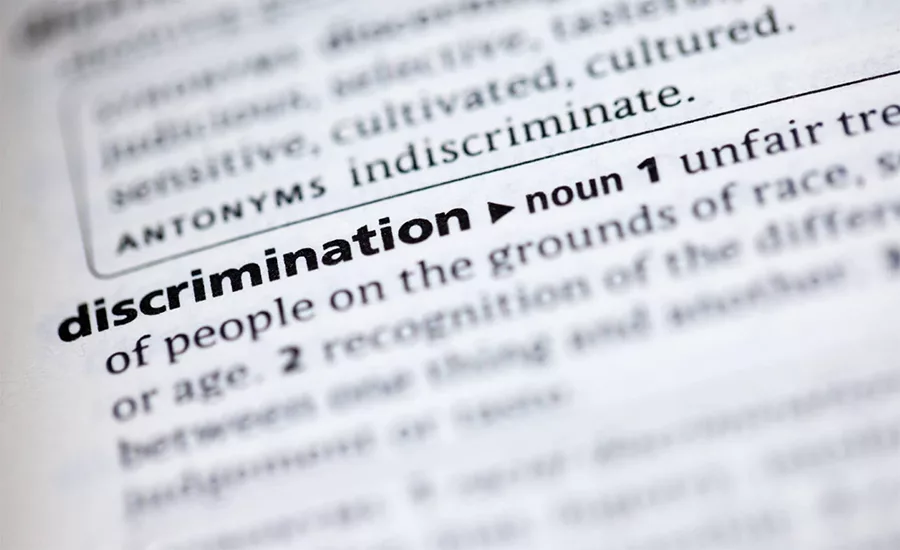Age and Other Post-Pandemic Discrimination Claims

The devastating loss of jobs and permanent business closures, which may not yet be over, are clearly the most significant but not the only bitter products of the coronavirus pandemic affecting U.S. workplaces. The widespread unemployment it has created, as well as cost-cutting measures taken by businesses to survive, could lead to a sharp rise in claims of employment discrimination in the near future.
The possibility of such claims has likely been exacerbated by the recent national focus on actual or perceived social and racial injustice in our society in general. Any one of these unrelated circumstances could create the potential for claims of workforce discrimination on the basis of one or more of the several statuses protected under Title VII of the Civil Rights Act of 1964.
Discrimination in a Recession
In 2019, the number of employee charges alleging workplace discrimination filed with the Equal Employment Opportunity Commission was the lowest in over 20 years. The decline coincided with the dramatic growth in employment during that same period. Full employment, with people working all of the hours they want and then some, understandably pushes concerns about perceived unfair or discriminatory treatment to the back burner. The correlation between the level of employment and the number of discrimination charges filed was also seen in the years immediately following the “Great Recession” of 2008 and 2009. The years 2010, 2011, and 2012 had the highest number of charges of discrimination filed in the prior 18 years, as well as some of the highest unemployment rates seen in recent years.
The loss of jobs as the direct result of the coronavirus pandemic is unprecedented, and reminiscent of the conditions during the Great Depression. Businesses that survived and those attempting to reopen have done so with reduced staff in most cases. Job eliminations, combinations and consolidations, operational restructuring and similar changes are likely to become permanent for many employers.
Since the majority of today’s workforce falls within a protected category under Title VII, there will be cases where an employee within one or more of the various protected categories will be passed over for recall or not recalled due to job elimination. While potential claims of discrimination based upon race, gender, national origin, or disability are always possible in such circumstances, perhaps the greatest potential lies in claims of age discrimination under the Age Discrimination in Employment Act (ADEA). The large number of employees well past the protected age of 40 in today’s workforce should be a cause for concern for both the recall process, as well as in the case of job eliminations. In some cases, it may be a refusal to recall a worker due to paternalistic concern over possible coronavirus exposure to uniquely vulnerable employees. In addition, whether accurate or not, older workers are often viewed as less productive and more expensive than younger employees. They are therefore potentially the first casualties in a workforce reduction.
The impact of the extended employment and income loss, as well as the devastation of 401k retirement accounts as a result of the pandemic, will force many near-retirement employees to want to keep working. Many were already considering this partially as a result of the significant losses to retirement plans incurred in the 2008-2009 recession. Knowing the difficulty of finding suitable employment when a person is 50 or 60, or perhaps even older, they will desperately want to hang on to their pre-pandemic jobs.
Discrimination at Work
In a recent study on “Ageism in the Workforce” by global specialist insurer Hiscox, it was noted that of the 400 full-time U.S. workers, 67% responded that they planned to continue working after they turn 66. Medical science has enabled many to enjoy good health, and in some cases, their work in their one true passion. Given the very real concerns of this segment of the workforce that were already present prior to the impact of the coronavirus pandemic, they can be expected to challenge even the appearance of discriminatory treatment.
While potential age discrimination claims pose a particular problem, race, gender, and disability claims are obviously possible as well. Employees with underlying medical conditions that could pose a higher risk of serious illness from COVID-19 exposure are entitled to reasonable accommodation for their disabilities under the Americans with Disabilities Act. Absent unusual circumstances, it would not be a basis for a refusal to recall them to work. In addition to blatant cases of discrimination, the on-going focus on racial injustice could easily precipitate claims of race discrimination if African-American employees are impacted in greater numbers than others in job elimination. The same would be true for gender or any other protected status.
In order to minimize the potential for legal fallout from these difficult decisions on who to recall or retain, employers must tread cautiously. The unique circumstances of each individual case must be carefully evaluated: Is the decision based upon defensible objective criteria, such as needed critical skills? Is the person chosen to remain employed demonstrably the better candidate for retention? Have all reasonable alternatives to avoid termination been fully explored and documented? Does the employee to be terminated have any legitimate basis for a possible claim of discrimination or retaliation?
These and similar questions should all be satisfactorily addressed and documented during the decision stage rather than in response to a subsequent charge of discrimination.
Anticipating the potential for claims of discrimination to arise, and being fully prepared to provide the objective basis for a failure to recall an employee, or for termination, is perhaps the most effective means of defending against any such claims.
Looking for a reprint of this article?
From high-res PDFs to custom plaques, order your copy today!






